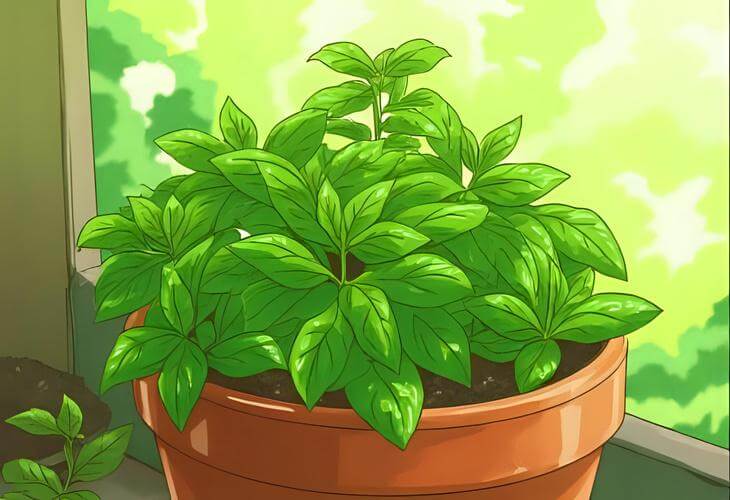
Mint (Mentha) is one of the most well-loved and versatile herbs in the garden. Known for its vibrant scent, fast growth, and broad culinary and medicinal uses, mint offers an abundance of benefits with very little fuss. Whether you’re brewing a calming tea, muddling a mojito, or simply enjoying its refreshing scent as you walk by, mint is a sensory delight.
But mint is more than just a flavorful herb—it’s also a wonderful plant for attracting pollinators. Its flowers, though often small and understated, are rich in nectar and offer vital forage for a wide array of beneficial insects. Hardy and fragrant, mint is a top choice for both gardeners and pollinators.
Soil (pH) Requirements
Mint prefers moist, fertile soil that drains well and is rich in organic matter. While it’s quite tolerant of a range of conditions, it thrives best in a soil pH between 6.0 and 7.0.
Tips for Healthy Soil
- Add compost to boost moisture retention and fertility.
- Avoid overly dry or compacted soils.
- Mint adapts well to containers, where soil control is easier.
Sun Requirements
Mint grows well in full sun to partial shade. Ideally, it should receive at least four to six hours of sunlight daily.
Placement Tips
- In hot southern climates, some afternoon shade prevents wilting and scorching.
- In cooler climates, full sun encourages vigorous growth and stronger flavor.
- Great for shadier spots where other herbs might not thrive.
Watering Requirements
Mint prefers consistently moist soil. It does not tolerate drought well, especially during its active growing period in Spring and Summer.
Watering Guidelines
- Water regularly, keeping soil evenly damp but not waterlogged.
- In containers, check daily, especially during heat waves.
- Mulch around base to help retain soil moisture and reduce weeds.
Best Plant Hardiness Zones
Mint is a hardy perennial in most parts of the U.S., returning reliably year after year.
Most mint varieties grow well in USDA Zones 3–9.
In colder regions, mulch heavily in Fall to protect roots.
In containers, bring indoors for Winter or treat as an annual.
Note: Mint spreads aggressively via underground rhizomes. To prevent it from taking over your garden, plant it in containers or use a root barrier if planting in beds.
The Popularity and Pollinator Benefits of Mint
Mint’s popularity stretches from backyard gardens to commercial farms, herbal apothecaries, and kitchens worldwide. It’s used for:
- Decorative and pollinator-friendly garden borders
- Herbal teas and beverages
- Flavoring desserts and sauces
- Medicinal remedies (especially for digestion and headaches)
- Aromatic oils and insect repellents
When allowed to flower, mint becomes a pollinator powerhouse. Its delicate, tubular blossoms are a rich nectar source for:
- Honeybees
- Bumblebees
- Solitary native bees
- Hoverflies
- Butterflies, especially skippers and hairstreaks
The long blooming season (often midsummer to Fall) provides crucial food when other flowers are fading.
Five Must-Grow Mint Varieties and Their Unique Uses
Spearmint
Spearmint is perhaps the best-known culinary mint. It has pointed green leaves, a mildly sweet flavor, and is widely used in both sweet and savory dishes.
Popular Uses
- Classic mint tea and mojitos
- Lamb sauces, salads, and spring rolls
- Soothing digestive tonics
Pollinator Note: When in bloom, spearmint’s soft pink or lavender flowers attract honeybees and native bees alike.
Best Zones: 3–9
Peppermint
A hybrid of spearmint and watermint, peppermint boasts a sharper, more menthol-rich flavor. It’s prized for its medicinal properties and is a staple in herbal medicine and personal care products.
Popular Uses
- Tummy-soothing teas and cold remedies
- Flavoring for chocolates, desserts, and candy
- Aromatherapy and DIY body care
Pollinator Note: Highly aromatic and flowering later in the season, peppermint draws bumblebees and hoverflies, supporting pollinators well into autumn.
Best Zones: 3–8
Chocolate Mint
A fun and flavorful cultivar, chocolate mint has a rich, sweet aroma that smells like mint chocolate chip ice cream. It features dark stems and slightly purplish leaves.
Popular Uses
- Dessert garnishes and flavored syrups
- Herbal ice cream or infused whipped cream
- Aromatic border in kitchen gardens
Pollinator Note: With blooms similar to peppermint, it’s equally attractive to bees and butterflies.
Best Zones: 4–9
Apple Mint
Apple mint features rounder, fuzzy leaves and a gentle fruity-mint fragrance. It’s more upright and ornamental than some other mints, with a slightly apple-like flavor.
Popular Uses
- Fresh fruit salads and infused water
- Iced tea with a hint of sweetness
- Cottage garden borders
Pollinator Note: Apple mint’s tall spikes of white or pale pink flowers are magnets for butterflies and hoverflies, and often buzz with small bees on warm days.
Best Zones: 5–9
Corsican Mint
Tiny but mighty, Corsican mint is a low-growing ground cover that forms a fragrant carpet of small green leaves. When walked on or brushed against, it releases a powerful minty aroma.
Popular Uses
- Garden pathways and patio edges
- Container “spillers” or fairy gardens
- Freshening footpaths and shaded beds
Pollinator Note: While its flowers are small, they still attract tiny pollinators like sweat bees and hoverflies during midsummer.
Best Zones: 6–9 (more sensitive to frost)


 Previous
Previous

